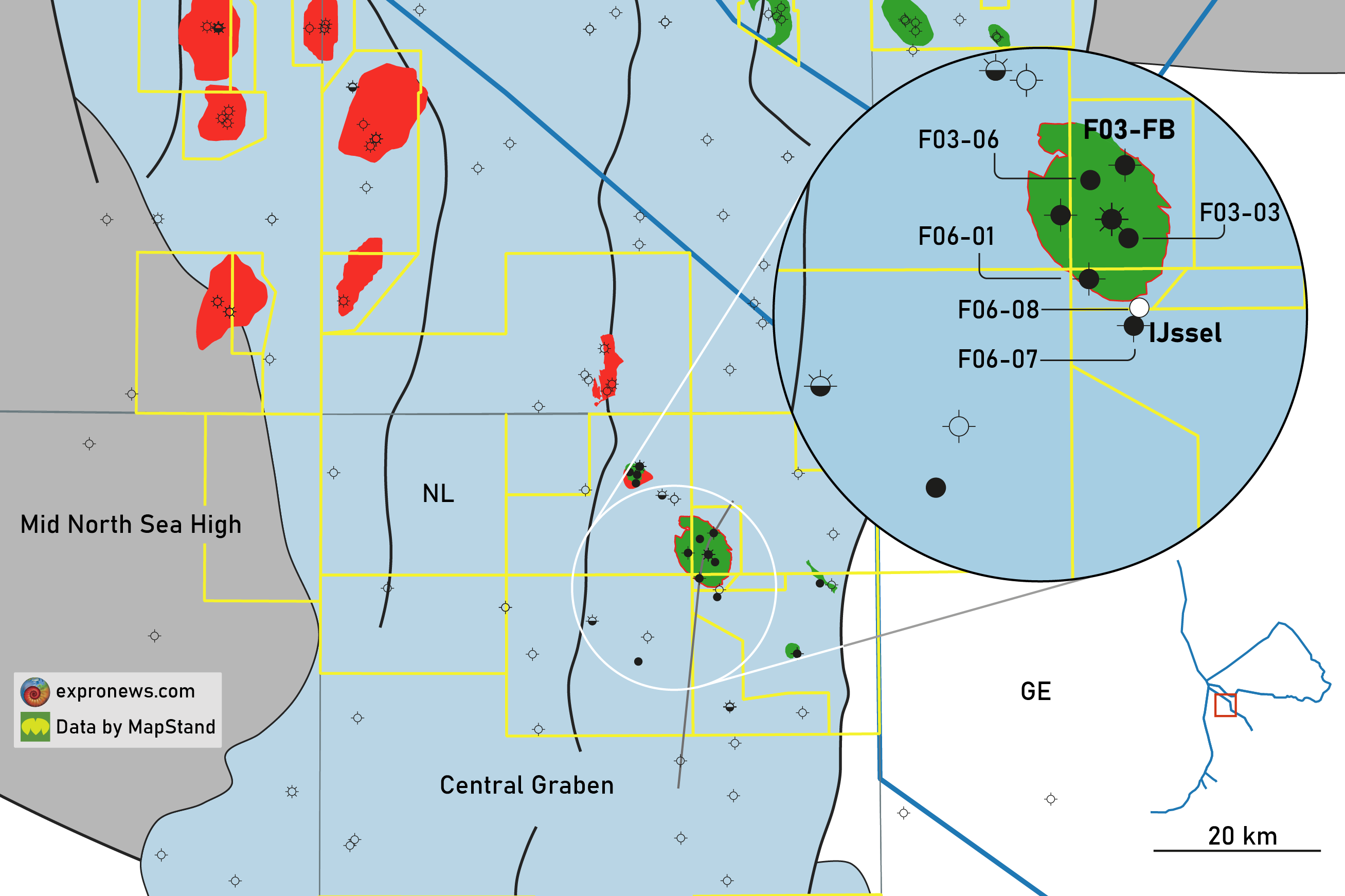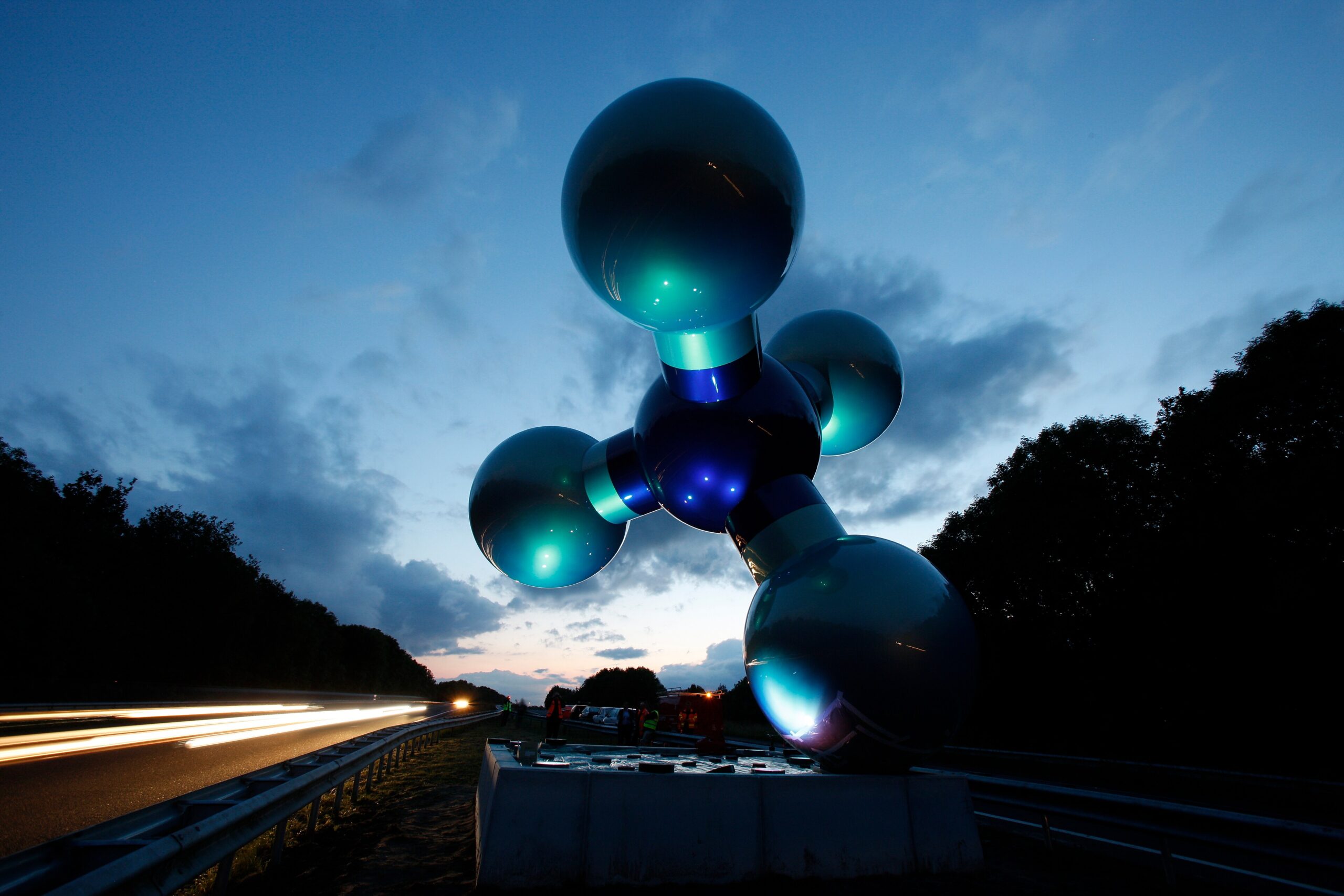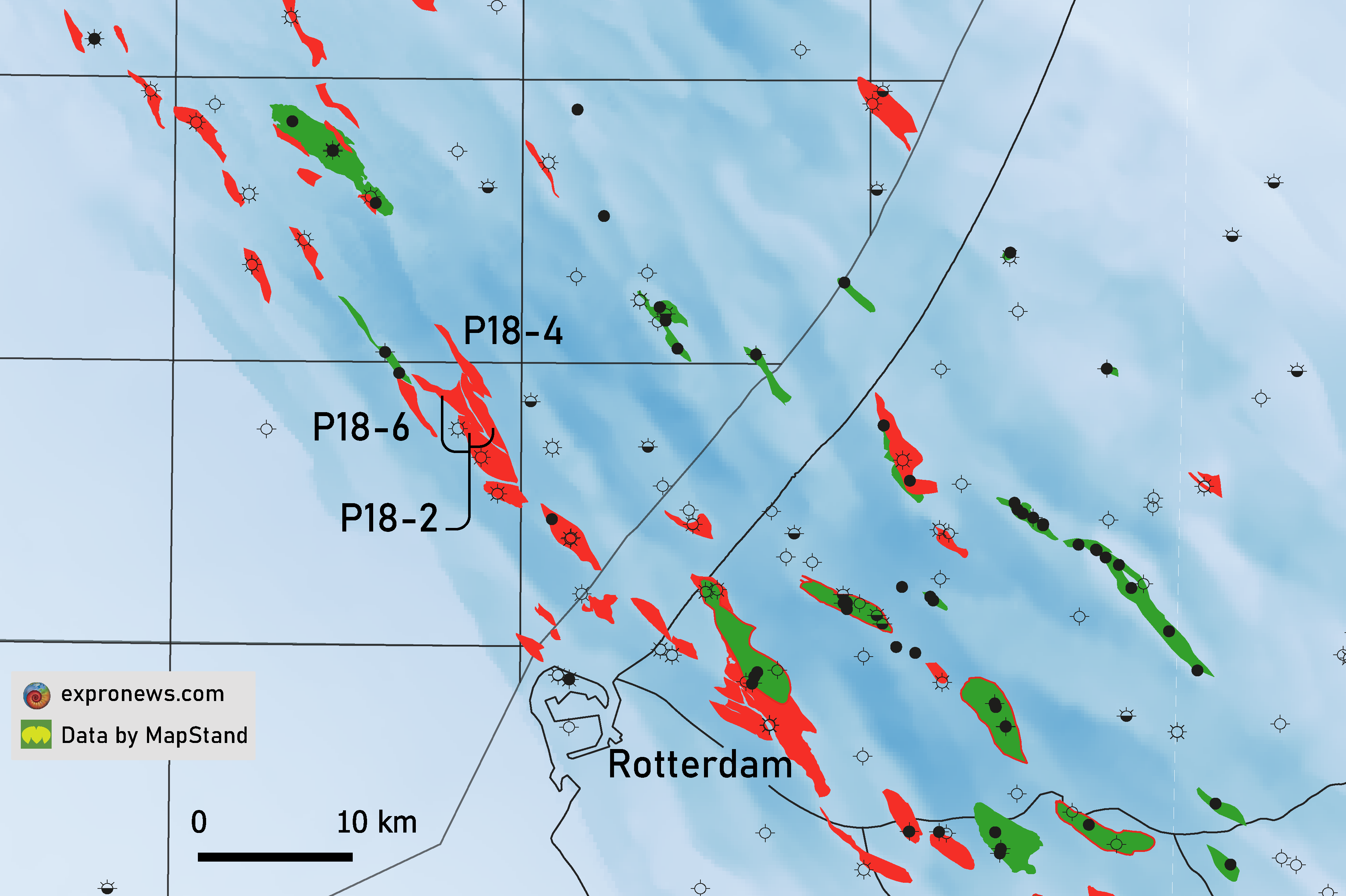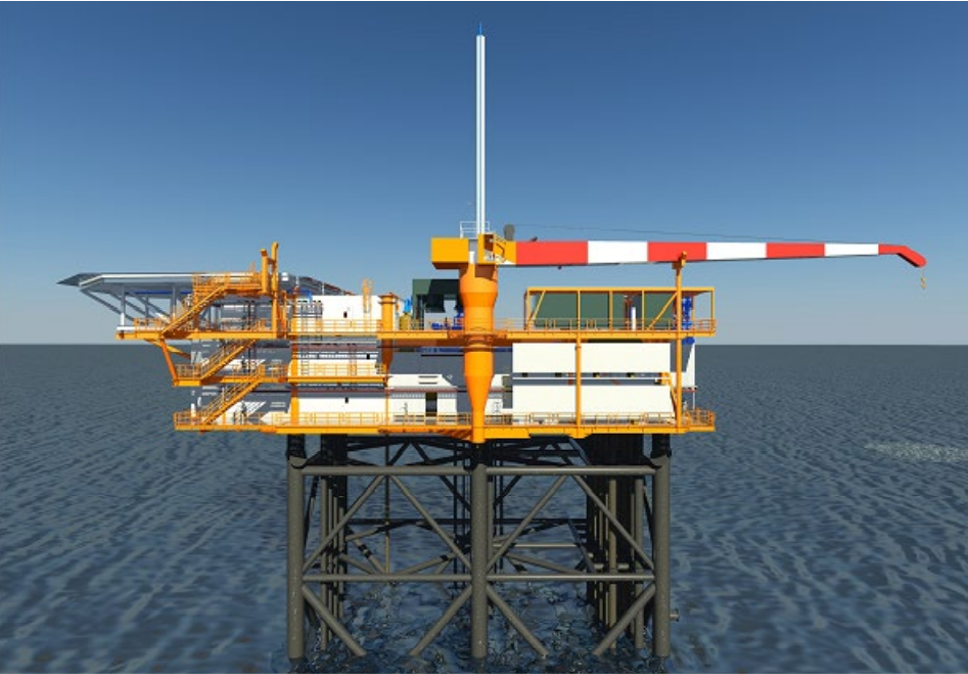Early 2021, ONE-Dyas completed a successful exploration well (F06-07) in the northern Dutch offshore, just south of the Neptune-operated F03-FB field. In contrast to most wells drilled in the Dutch sector, where gas is the most important target, TNO published the results of well F06-07 as being oil and gas.
The main reservoir in well F06-07 is probably the Scruff Greensand Fm of Upper Jurassic age. This sandstone unit is stratigraphically younger and also significantly shallower than the three Middle to Upper Jurassic reservoir intervals of the F03-FB field just north of the IJssel discovery. F03-FB has been in production since 2003 and is operated by Neptune.
Well F06-07 was drilled in licence F06b, where ONE-Dyas is the operator and partners are Dana and EBN. F06-08 is situated in F06c and F06d where ONE-Dyas is only partnered by EBN.
As the cross-section below illustrates, and if the reservoir is the Scruff Greensand indeed, the closure of the IJssel discovery is low-relief and may be supported by a truncation of the Scruff Greensand Fm towards the south.

The appraisal well (F06-08) that is now being drilled is situated even closer to the F03-FB field than the IJssel discovery well. This probably means that it is testing the northern limit of the closure, as the Scruff Greensand can be seen dipping slightly northwards in the direction of F03-FB. This may also form the explanation as to why the wells in the F03-FB field did not encounter any hydrocarbons when penetrating the succession on their way to the reservoirs deeper down.
Chalk prospective?
The cross-section also shows that the Upper Cretaceous Chalk is being truncated just north of the F06-08 well. A situation can therefore be envisaged that the Chalk also hosts some hydrocarbons.
Estimated volumes of the IJssel discovery have not been released to date, but given that ONE-Dyas is now drilling an appraisal well there is a good chance to prove an economic volume that could possibly be tied to F03-FB infrastructure. The IJssel discovery can therefore become another example of successful (very) near-field exploration.
HENK KOMBRINK





